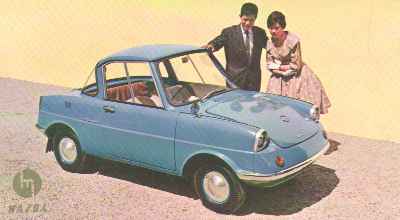
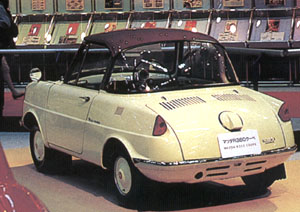


The Mazda R 360 arrived in May, 1960 as a 2-door coupe with a 356 cc 2-cylinder in V OHV air-cooled rear engine. The wheelbase was 176 cm, the length 298 cm, the suspension independent front and rear with rubber springs (torsion). The car was called Mazda 360 Coupe in the export.
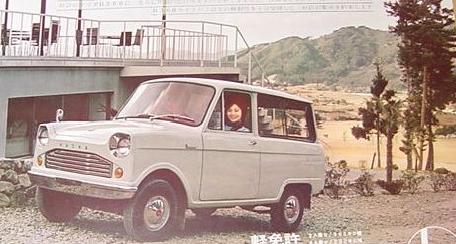
By March, 1961 arrived the Mazda B 360 pickup with a wheelbase of 198.5 cm with conventional drivetrain layout using the same engine as the Mazda R 360. A 2-door wagon came in May, 1961. By 1964 this engine was replaced by a 4-cylinder water-cooled OHV 358 cc engine (as used in the Carol). There was a rigid axle with leaf springs at the rear. In the export there has been a Mazda B 600 with a 577 cc 2-cylinder air-cooled OHV engine.
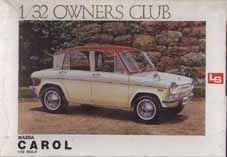
In February, 1962 arrived the Mazda Carol as a 2-door sedan with a wheelbase of 193 cm and a transversely placed 4-cylinder water-cooled OHV 358 cc engine at the rear. The suspension was independent front and rear with rubber springs (torsion). The car had a length of 298.4 cm. By October, 1962 the Mazda Carol 600 arrived with the engine enlarged to 586 cc, the length of the car was 320 cm and the width 132.5 cm. In November, 1963 came a 4-door sedan. In the export the cars were called Mazda 360 and Mazda 600, also Mazda P 360 and Mazda P 600 or Mazda N 600.
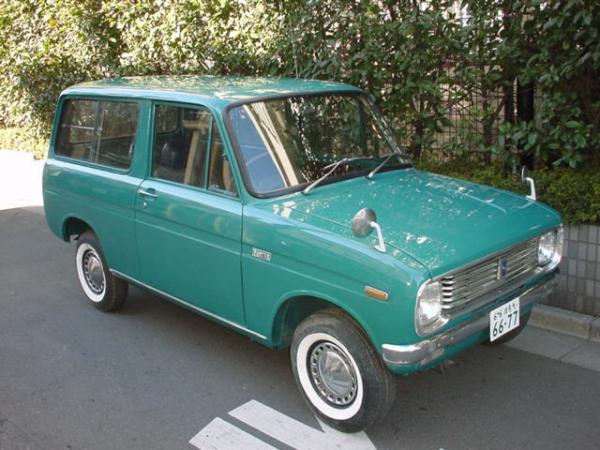
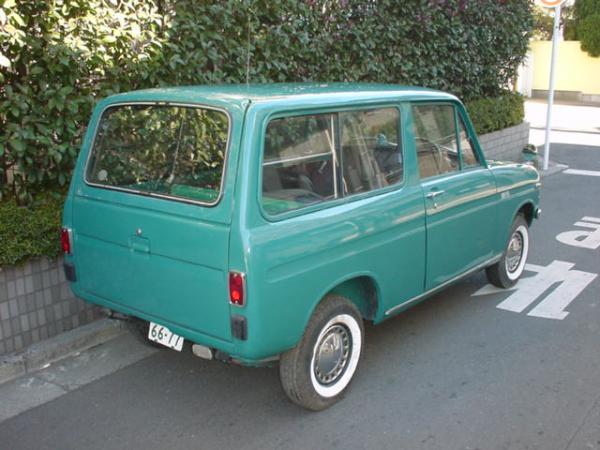
As a successor to the Mazda B 360 arrived in November, 1968 the Mazda Porter 2-door wagon and pickup, again with conventional drivetrain layout. The wheelbase was 199.5 cm, the engine initially the 4-cylinder OHV 358 cc with 20 HP, to be replaced by model year 1974 by a 2-cycle 2-cylinder water-cooled 359 cc engine with 35 HP. There was a rigid axle with leaf springs at the rear. This car was deleted by 1977.
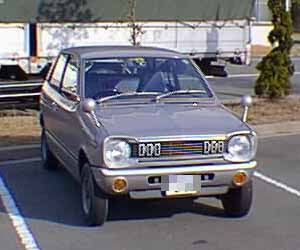
By July, 1972 arrived the Mazda Chantez 2-door sedan with a striking body and a long wheelbase of 220 cm, with a length of 299.5 cm resulting in a post-war world record high wheelbase to length ratio of 0.73. The 2-cylinder 2-cycle water-cooled front engine of 359 cc was driving the rear wheels with a rigid axle with leaf springs. With the deletion of this model in March, 1977 Mazda would be out of the kei car industry until late 1989.
Then in November, 1989 arrived the Autozam Carol, with a wheelbase of 233.5 cm based on the 1989 Suzuki Alto and with its 3-cylinder OHC 4-valve engine of 547 cc. It was a 3-door sedan with a length of 319 cm. The rear axle was a torsion beam with coil springs, also for the four-wheel-drive. Strangely enough, this vehicle was released less than 4 months before the implementation of the new tax regulations. So by March, 1990 the car was 325 cm long, and the engine the Suzuki 657 cc. By January, 1991 there was also an OHC 2-valve turbo available. In August, 1992 the length grew to 329 cm. In February, 1995 an interesting limited edition Mazda Carol RV (Recreational Vehicle) was introduced with a grille guard.
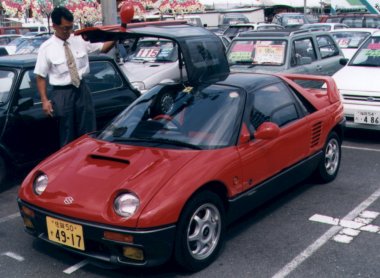
In October, 1992 arrived the Autozam AZ-1 2-seater 2-door coupe (wing doors) with the Suzuki 657 cc DOHC 4-valve 64 PS turbo engine placed transversely before the rear axle. There was a steel skeleton monocoque frame with plastic outer panels. The suspension was independent allround as a matter of course. The wheelbase was 233.5 cm. By May, 1994 this car was also marketed as M2 1015. In January, 1993 arrived a Suzuki clone. The car would be deleted in 1995.
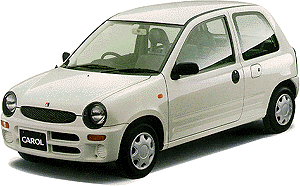
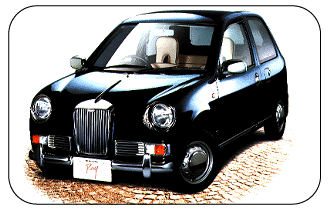
The 2nd generation Autozam Carol arrived in November, 1995 on the same platform as the previous one. The length was now 329.5 cm and the turbo featured 64 PS for the first time. Presumably, in August, 1997 the car was renamed Mazda Carol. This would be the last Mazda minicar with a body of its own. By November, 1997 came the Carol Classic and Carol Custom with a retro front, succeeding to the Carol Mazdaspeed. To be complete it should be noted that Mitsuoka built the Ray with a Wolseley Hornet grille and Onix the Marfy with a Rolls-Royce type of grille and a back end in style.
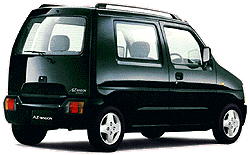
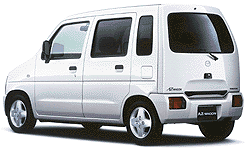
In November, 1994 came the Autozam AZ-Wagon with an MPV body, a clone of the Suzuki Wagon R. The car had 2 doors left, 1 door right (and a back door). The engines were the 3-cylinder OHC 4-valve 657 cc, as well as since October, 1995 the 2-valve turbo. Four-wheel-drive was available. By June, 1996 came a 5-door. In May, 1997 a light alloy 3-cylinder 658 cc DOHC 4-valve engine was added, with and without turbo. Presumably by August, 1997 the vehicle was renamed Mazda AZ-Wagon, and by June, 1998 the 657 cc engines were deleted.
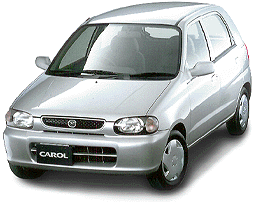
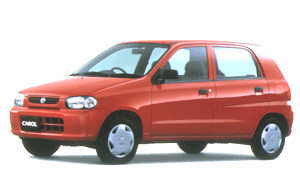
Then in October, 1998 came the 3rd generation Mazda Carol which now was similar to the Suzuki Alto as a 3-door and a 5-door sedan. The length grew to 339.5 cm, the width to 147.5 cm, the wheelbase 236 cm. The rear suspension is a torsion-beam. Engines are the 657 cc OHC 4-valve and a light-alloy 658 cc DOHC 4-valve, four-wheel-drive is available. A retro version is built as Mitsuoka Ray.
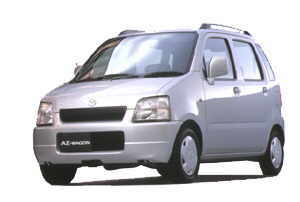
Also, in October, 1998 arrived the 2nd generation Mazda AZ-Wagon, again a clone of the Suzuki Wagon R and now only available as a 5-door. Engines remained the same as in the previous generation, including the 657 cc engines. There is also the RR-F Turbo with sporty front end. By October, 1999 the 657 cc non-turbo engine was deleted.
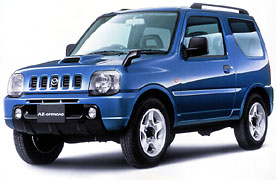
New in October, 1998 was the Mazda AZ-Offroad, a clone of the Suzuki Jimny.
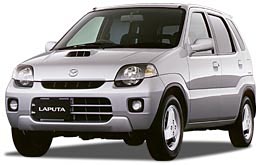
And in March, 1999 came the Mazda Laputa, a Suzuki Kei clone with the same characteristics.
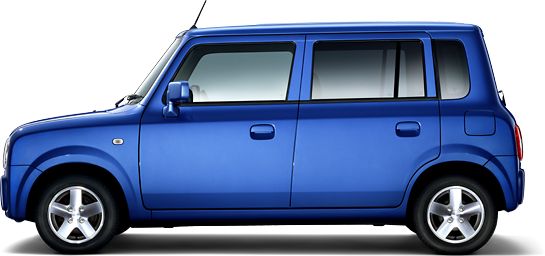
In February, 2002 arrived the Mazda Spiano, a Suzuki Lapin clone with the same characteristics.
Please have your comments.
Homepage
Note: Length/Width/Displacement originally 300 cm/130 cm/360 cc . . . by April, 1976: 320 cm/140 cm/550 cc . . . by March, 1990: 330 cm/140 cm/660 cc . . . by October, 1998: 340 cm/148 cm/660 cc
Far East Auto Literature, 1998-1999